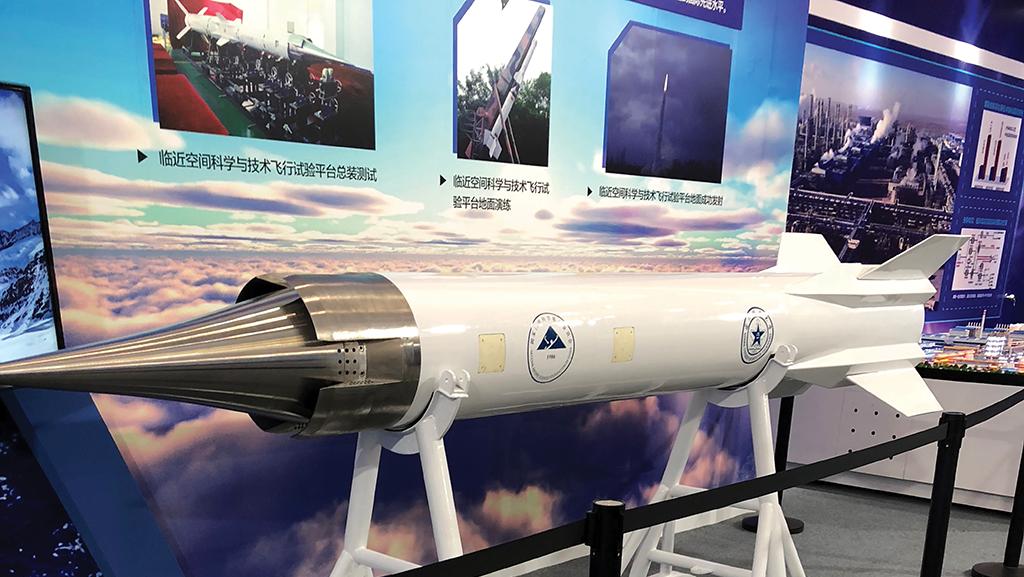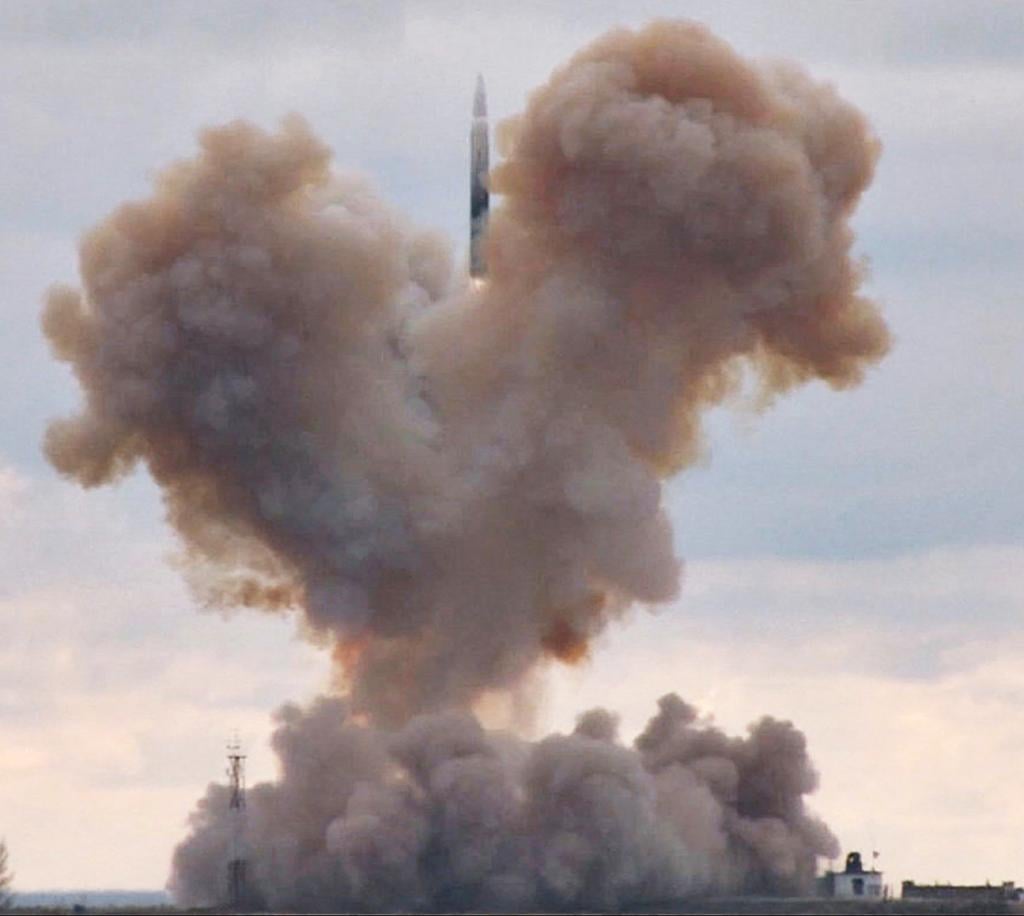極超音速兵器開発、各国で加速 | International Hypersonic Strike Weapons Projects Accelerate

ロシアと中国が新型の極超音速攻撃兵器を配備したことにより、世界各国で同種の兵器の開発に関心が高まっている。フランス・インド・日本・イギリスも極超音速攻撃能力の確立を目指している。
ロシアのアヴァンギャルド極超音速滑空飛行体(HGV)、キンジャル空中発射弾道ミサイル(ALBM)、中国の東風17 HGVに加えて、両国はさらなる極超音速兵器の開発を進めている。一例を挙げると、ロシアはジルコン極超音速巡航ミサイル(HCM)および関連技術の開発に着手しており、中国は極超音速システムの軍事・民間・宇宙転用を可能とするための広範な開発・製造インフラの整備を進めている。
推進システム・機体構造・誘導装置・熱防護といった、極超音速システム固有の技術的課題や開発コストを考慮すると、このような兵器はどのような役割を受け持つことになるのか?極超音速兵器の速度・機動性・飛行特性は、被攻撃側による探知・追尾・迎撃を困難とし、リアクションタイムや有効な迎撃可能時間の減少をもたらす。
これらの特性により、極超音速兵器は即座に攻撃が必要な目標や、ミサイル防衛網に守られた移動目標に対する攻撃の際に有効だ。また、対艦攻撃もロシア・中国・日本で配備または開発されている極超音速ミサイルの重要な任務だ。従来からの精密対地攻撃に極超音速ミサイルを用いる場合は、充分な情報収集・監視・目標特定・偵察能力といった支援体制が必要となり、移動目標の場合はより高度な体制が必要となる。
フランスは第4世代の空中発射型核ミサイル・ASN4Gを開発中だ。スクラムジェットエンジンを搭載したこのミサイルは2030年代中盤の配備を目指しており、現行のASMP-Aを置き換える。また同国はHGV試験機である「Vehicule Manoeuvrant Experimental(V-MaX)」の開発も進めており、2021年末までに初飛行を行う予定だ。インドも同様に2つの極超音速兵器のプロジェクトを進めている。ブラモス2はインドとロシアのジョイントベンチャーであるBrahMos社によって開発が行われている。ブラモス2はマッハ5~7で飛行するHCMとして開発されており、この開発をサポートしているのがスクラムジェット推進のHypersonic Technology Demonstrator Vehicle (HSTDV)だ。2019年6月に行われた試験飛行は、発射母機であるアグニ1のテクニカルトラブルにより失敗している。
日本は2つの極超音速システムの計画概要を発表した。ひとつは島嶼防衛用高速滑空弾(HVGP)、もうひとつは極超音速巡航ミサイル(HCM)だ。日本は平成31年度中期防において南西諸島の離島防衛力強化を打ち出しており、HVGPの配備はその一環である。このHVGPは戦術HGVであり、空母のような大型艦に対する徹甲弾頭や、地域制圧に用いる高密度自己鍛造弾の搭載が可能だ。
初期型は2024~2028年頃の配備を目指しており、2030年代に改良型が配備される計画となっている。HCMの方はスクラムジェット推進のミサイルで、HVGPと同様の弾頭を搭載し、日本に侵攻を試みる艦艇や上陸部隊に対するスタンドオフ攻撃を主な役割とする。HCMは2020年代末~2030年代初頭に配備され、改良型が2030年代後半以降に配備される見込みだ。
イギリスは極超音速攻撃能力の確立に向けた方法を模索しており、ストームシャドウ/SCALP巡航ミサイルや、エグゾセおよびハープーン対艦ミサイルの更新を目的とした、2030年に開始予定の将来巡航兵器/対艦兵器のフランスとの共同開発プロジェクトの一部となる可能性もある。2019年7月、イギリス空軍のSimon Rochelle 少将(当時は作戦能力担当参謀長)は、イギリスは2023年までに手頃な空中発射型極超音速兵器の配備を考えていると発表した。
さらに、以前Aviation Weekが報じたとおり、アメリカ・イギリスが共同研究している超高速飛翔体THRESHER(Tactical High-Speed, Responsive and Highly Efficient Round)の開発が米空軍研究所および英国防科学技術研究所で進められており、2022年もしくは2023年には完了する見込みだ。
イギリスの2023年までに早急に極超音速ミサイルを調達しようという計画を除くと、現在明らかになっている極超音速兵器の開発が完了するのは2020年代後半または2030年代以降となる。この期間は、ロシアと中国の極超音速攻撃能力が大幅に拡大するであろう時期とも重なることになる。
ロシアは2017年12月のキンジャルALBMの初期配備、2019年12月のアヴァンギャルドHGVに続く、新たな極超音速システムの開発に着手している。キンジャルおよびアヴァンギャルドは、ともに2018年3月1日にプーチン大統領が年次教書演説で明らかにしたもので、アメリカのミサイル防衛システムに対抗する形で極超音速兵器の開発を進めるという同国の長期的な取り組みを反映するものだ。
アヴァンギャルド開発計画はアメリカ国民に突然の驚きを与えたように見られがちだが、実際は1980年代後半にアメリカの戦略防衛構想(SDI:通称スターウォーズ計画)に対抗するためにソ連が始動したアルバトロス計画に遡ることができる。ST Analytics社の創業者であり、ドイツを拠点に極超音速技術のコンサルティングを行うMarkus Schiller 氏によれば、Mashinostroyeniya設計局がYu-70プロトタイプの試験を1990年~92年にかけて、ソ連崩壊により計画が休止されるまでの間に数回行った。2000年にプーチン大統領が就任するとYu-70計画は再始動され、2001~2011年にかけて一連の飛行試験が行われた。アヴァンギャルドHGVは2013~2018年にかけて飛行試験が行われた改良型、Yu-71を原型としているとSchiller氏は語る。
ロシアによる極超音速兵器の開発は、同国のより広範な軍事近代化計画の一環として、通常兵器による長距離精密攻撃能力をさらに拡充したいという思惑も反映している。戦略用途・戦術用途を共に満たすため、核・非核両用の極超音速兵器の開発が進められている。
アヴァンギャルドとキンジャルに加え、少なくとも3つの開発計画が進行中だ。それらはジルコン、GZUR(ロシア語で「極超音速誘導ミサイル」の略称)、そしてスホーイSu-57フェロンに搭載される空中発射型の兵器だ。アヴァンギャルドはICBMを母機とするHGVで、当初はUR-100N(SS-19の近代化型)を用い、その後は開発中のSS-X-29サルマット(サタン2)が用いられる可能性がある。アヴァンギャルドはマッハ20以上の速度を発揮し、針路および高度変更が可能で、大陸横断を可能とする航続距離を持つと報じられている。

主に核戦力としての使用が想定されているアヴァンギャルドだが、通常攻撃用途にも使用可能と報じられている。キンジャルは核・非核両用で、イスカンデルM戦術弾道ミサイルの空中発射型であり、マッハ10の速力と2,000km(1,250海里)の射程を持つ。このミサイルはミコヤンMiG-31の改良型であるMiG-31Kと併せて配備が進められており、他の機種でも使用が可能(ツポレフTu-22M3バックファイアと報じられている)とされる。
また、ロシアはスクラムジェット推進のHCM、3K22ジルコンの開発も進めている。速力は最大でマッハ9、1,000km以上の射程、対地および対艦攻撃任務への使用が可能だ。ジルコンはUKSK垂直発射装置といった、オーニクス超音速巡航ミサイルを発射可能な既存の発射機を用いることができる。2022年には配備される見込みで、2020年2月には新型フリゲート艦「アドミラル・ゴルシコフ」からの試験発射に成功している。
INF条約(中距離核戦力全廃条約)の失効を受け、プーチン大統領はジルコンの地上発射型の開発を表明した。GZURは空中発射型のミサイルで、速力はマッハ6、射程距離は1,500kmであり、ツポレフTu-95MSベアの爆弾倉に収まるサイズであると報じられており、2020年代初頭には配備される可能性がある。これに関して、5月にロシアメディアはTu-22M3の改良型Tu-22M3M向けの新型極超音速ミサイルの試験がTu-22M3を用いて行われたと報じている。さらに、Su-57への搭載を想定した極超音速ミサイルの開発も報じられている。
中国が存在を認めている極超音速兵器は、東風17のみだ。同国が極超音速兵器の開発を追求するのは、アメリカのミサイル防衛網に対抗できる充分な精密攻撃能力を持つことが、より広範な「世界レベルの」軍事力を保有することにつながるからだ。東風17は通常弾頭を装備した中距離弾道ミサイル(東風16から派生した可能性もある)で、射程1,800~2,500kmのHGVを搭載している。10月1日の国慶節での軍事パレードでお披露目された際は、「中近距離目標に対する精密攻撃用途」と紹介された。
3月に行われたアメリカ下院軍事委員会で、NORAD司令官Terrence O’Shaughnessy空軍大将は、中国が大陸横断型HGVの試験を行っていると証言した。これは2019年の国慶節軍事パレードに登場した新型のICBM・東風41とみられ、新型のHGVが搭載される可能性がある。O’Shaughnessy大将の証言は、中国によるHGV開発計画と同国の核戦力の将来計画を結びつけた、2014年のLee Fuell氏(当時は空軍諜報部に所属)の声明を裏付けるものだ。
中国はHCMに必要な技術の開発を進めている。たとえば、2018年5月に北京でスクラムジェット試験機・凌雲1が初公開された。そして8月には極超音速ウェーブライダー試験機・星空2の試験を成功させ、マッハ6を記録した。さらに特筆すべきは、2019年4月に厦門大学がダブルウェーブライダー形式の嘉庚1試験機の飛行を成功させたことだ。空中発射型の極超音速攻撃能力への同国の関心も確認された。中国はさらに2種類のALBMを開発中とみられており、これは近い将来、同国に空中発射型の極超音速攻撃能力を与えることにつながると思われる。
2019年の国慶節軍事パレードに登場した新型のCJ-100も注目に値する。発表された「長射程・高精度・即応能力」という説明以外に、性能などは公式には発表されていない。中国の刊行物「Naval and Merchant Ships」を引用したThe South China Morning Post紙は、CJ-100はロケットブースターとラムジェットを用いた2段式のエンジンを搭載し、巡航速度はマッハ4、最高速度はマッハ4.5程度と予想している。中国の極超音速兵器の開発ペースから考えて、CJ-100がHCMである可能性は否定できない。
中国の極超音速兵器開発の進捗を示すさらなる兆候もある。2019年1月、独自開発したタービンベースの複合サイクルエンジンの設計・開発段階が終了し、機体への搭載テストに進むことが報じられている。
以上は、James Bosbotinisが Aviation Week & Space Technologyいた記事です。 Aviation Week & Space Technology は、豊富な経験と人脈を持った専門家により、最新トレンドや最適な状況判断、ポリシー・要求仕様・予算に関する充実した情報を継続的にお届けします。 Aviation Week & Space Technology をもっと知りたい場合、こちらをクリックして下さい。
There is growing international interest in the development of offensive hypersonic weapon systems, particularly following the deployment by Russia and China of nascent hypersonic strike capabilities. France, India, Japan and the UK all are seeking to develop a hypersonic strike capability too.
Beyond Russia’s Avangard hypersonic glide vehicle (HGV) and Kinzhal air-launched ballistic missile (ALBM), and China’s DF-17 HGV, both nations are developing additional hypersonic weapon systems. Russia, for example, is working on the Zircon hypersonic cruise missile (HCM) and related technologies, while China is developing an expansive technological base and infrastructure for the development and production of hypersonic systems for military, commercial and space applications.
Given the technical challenges and cost inherent in developing hypersonic weapons, particularly in areas such as propulsion, airframe design, guidance and thermal management, what roles will such weapons undertake? The speed, maneuverability and flight characteristics of hypersonic weapons makes them challenging to detect, track and intercept, reducing the warning time available and window for interception.
Hypersonic weapons thus provide advantages for the prosecution of time-critical targets, mobile or relocatable targets or in the face of adversary missile defense capabilities. Maritime strike is also a key projected role for hypersonic missiles under development or being deployed by Russia, China and Japan. In the conventional precision-strike role, hypersonic weapons will require a robust set of supporting intelligence, surveillance, target acquisition and reconnaissance capabilities, in particular for the prosecution of mobile/relocatable targets.
France is developing its fourth-generation air-launched nuclear missile, the ASN4G, which will be scramjet-powered and is due to enter service in the mid-2030s, replacing the current ASMP-A. It is also developing an HGV demonstrator, the “Vehicule Manoeuvrant Experimental,” or V-MaX, which is due to make its first flight before the end of 2021. India is similarly pursuing two hypersonic weapon projects, the BrahMos-2, developed by the BrahMos joint venture between India and Russia, and another HCM project. The BrahMos-2 is intended to be an HCM capable of speeds of Mach 5-7; HCM development is supported by the scramjet-powered Hypersonic Technology Demonstrator Vehicle (HSTDV). An attempted test flight in June 2019 failed due to a technical problem with the Agni-1, serving as the launch platform for the HSTDV.
Japan has outlined plans for two hypersonic weapon systems; the Hyper-Velocity Gliding Projectile (HVGP) and a Hypersonic Cruising Missile. Japan outlined in its Midterm Defense Program (fiscal 2019-23) plans to strengthen the defense of “remote islands in the southwest region,” including through the establishment of HVGP units. The HVGP is intended to be a tactical HGV, capable of delivering a penetrating warhead for targeting, for example, aircraft carriers, or a “high-density EFP” (explosively formed penetrator) warhead for “area suppression.”
An initial variant will be deployed in the 2024-28 time frame with an improved variant following in the 2030s. The Japanese HCM will be a scramjet-powered missile, armed with the same warheads as the HVGP, and intended to provide a standoff capability to counter “ships and landing forces attempting to invade Japan.” The HCM will be deployed in the late 2020s/early 2030s, with an improved variant following later in the 2030s.
The UK is exploring options for the development of a hypersonic strike capability, including potentially as part of the joint Future Cruise/Anti-Ship Weapon project with France to replace the Storm Shadow/SCALP standoff cruise missile and the anti-ship Exocet and Harpoon from 2030. In July 2019, Air Vice Marshal Simon Rochelle, then chief of staff capability, announced that the UK sought to deploy an affordable, air-launched hypersonic weapon by 2023.
Moreover, as Aviation Week disclosed, a joint U.S.-UK study, Thresher (Tactical High-Speed, Responsive and Highly Efficient Round), is underway between the U.S. Air Force Research Laboratory and UK Defence Science and Technology Laboratory. It is due to be completed in 2022 or 2023.
With the notable exception of the UK’s intention to rapidly acquire a hypersonic missile by 2023, the majority of known programs are not likely to deliver weapon systems until the second half of the 2020s or 2030s. This period is also likely to see a significant expansion in Russian and Chinese hypersonic strike capabilities.
Russia possesses a nascent hypersonic strike capability following the initial deployment in December 2017 of the Kinzhal ALBM and in December 2019 of the Avangard HGV system. The Kinzhal and Avangard were both announced by President Vladimir Putin in his state of the nation address on March 1, 2018, and reflect Russia’s long-term efforts to develop hypersonic weapons, particularly as a response to U.S. missile defense efforts.
Although seeming to catch the U.S. public by surprise, the development of the Avangard can be traced back to the Albatross project started in the late 1980s as part of the Soviet response to the U.S. Strategic Defense Initiative. NPO Mashinostroyeniya performed several tests of the Yu-70 prototype in 1990-92, until the program was put on hiatus amid the dissolution of the Soviet Union, says Markus Schiller, founder of ST Analytics and a Germany-based consultant on hypersonic technology. The Yu-70 project was revived shortly after Putin assumed power in 2000, leading to a series of test flights in 2001-11. The Avangard HGV is based on an improved version known as the Yu-71, which performed a series of tests in 2013-18, Schiller says.
The development of hypersonic weapons also reflects Russia’s interest in developing a robust conventional long-range precision-strike capability as part of its wider military modernization efforts. It is developing and deploying both nuclear and conventionally armed hypersonic weapons, including dual-capable systems, to undertake tactical and strategic roles.
In addition to the Avangard and Kinzhal, at least three more development programs are underway: the Zircon, GZUR (deriving from the Russian for “hypersonic guided missile”) and an air-launched weapon to arm the Sukhoi Su-57 Felon. The Avangard is an ICBM-launched HGV, initially equipping the UR-100N, a modernized version of the SS-19, and might equip the developmental SS-X-29 Sarmat (Satan 2). The Avangard is reportedly capable of attaining speeds in excess of Mach 20, can maneuver laterally and in altitude, and can travel intercontinental distances.

Although principally intended as a nuclear system, the Avangard can reportedly also be used in the conventional strike role. The Kinzhal is a dual-capable, air-launched derivative of the Iskander-M tactical ballistic missile, with a range of 2,000 km (1,250 mi.) and a speed of Mach 10. It is being deployed with a modified variant of the Mikoyan MiG-31, the MiG-31K, and may be integrated with other aircraft, including reportedly the Tupolev Tu-22M3 Backfire.
Russia is also developing a scramjet-powered HCM, the 3K22 Zircon, which will be capable of speeds up to Mach 9, have a range in excess of 1,000 km, and operate in the land attack and anti-ship roles. The Zircon will be compatible with existing launchers capable of launching the Oniks supersonic cruise missile, such as the UKSK vertical launch system. It is due to enter service in 2022. A Zircon was successfully test-fired from the new frigate Admiral Gorshkov in February 2020.
Following the collapse of the Intermediate-Range Nuclear Forces Treaty, Putin announced the development of a ground-launched Zircon variant. The GZUR is reported to be an air-launched missile capable of a speed of Mach 6, a range of 1,500 km and sized to fit within the bomb bay of a Tupolev Tu-95MS Bear. It may enter service in the early 2020s. In this regard, Russian media reports in May noted the testing of a new hypersonic missile from a Tu-22M3 that is intended to arm the modernized Tu-22M3M. Another hypersonic missile is reported to be under development and intended to equip the Su-57.
China has thus far only confirmed one hypersonic weapon, the DF-17. Its pursuit of hypersonic weapons is driven by the requirements to counter U.S. missile defenses and acquire a robust precision-strike capability as part of its wider efforts to develop “world-class” armed forces. The DF-17 is a conventionally armed medium-range ballistic missile (potentially derived from the DF-16), equipped with an HGV, with a range of 1,800-2,500 km. When it debuted at China’s National Day Parade on Oct. 1, it was announced as being intended for “precision strikes against medium- and close-range targets.”
In testimony before the U.S. House Armed Services Committee this March, U.S. Air Force Gen. Terrence O’Shaughnessy, commander of U.S. Northern Command and the North American Aerospace Defense Command, stated that China is testing an intercontinental HGV. It is likely that the DF-41, China’s new ICBM that also debuted at the October 2019 National Day Parade, would be armed with the new HGV. O’Shaughnessy’s testimony appeared to echo public statements in 2014 by Lee Fuell, who was then in Air Force intelligence and linked China’s HGV development program to plans for that country’s nuclear arsenal.
China is developing the technologies required for HCMs. For example, in May 2018, a scramjet test vehicle, the Lingyun-1, was publicly exhibited for the first time in Beijing, while in August 2018 China successfully tested a hypersonic waverider test vehicle, the XingKong-2, which attained a speed of Mach 6. Notably, in April 2019, Xiamen University successfully flew the Jiageng-1 test vehicle, which employed a “double waverider” configuration. Interest in developing an air-launched hypersonic strike capability has also been noted. China is also believed to be developing two ALBMs, which would provide China with a near-term air-launched hypersonic strike capability.
The new CJ-100, which also debuted at China’s 2019 National Day Parade, warrants mention. Aside from the statement that the weapon offers “long range, high precision and quick responsiveness,” no technical information on the CJ-100 has been officially released. The South China Morning Post, citing the Chinese publication Naval and Merchant Ships, suggests the CJ-100 has a cruising speed of Mach 4 and top speed of Mach 4.5, adding that it employs a two-stage configuration utilizing a rocket booster and ramjets. Given China’s progress in developing hypersonic technologies, the possibility that the CJ-100 is a hypersonic cruise missile cannot be dismissed.
In a further indication of China’s progress in the development of hypersonic technologies, in January 2019 it was reported that an indigenous Turbine-Based Combined-Cycle engine had completed its design and development phase and was proceeding to the aircraft integration test phase.



